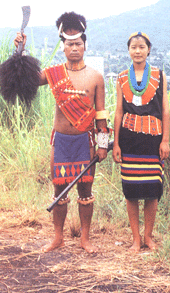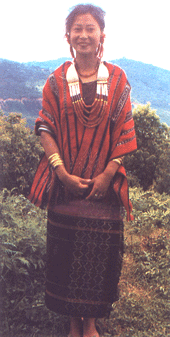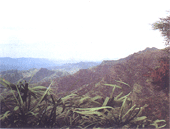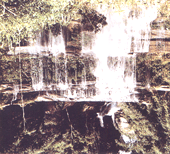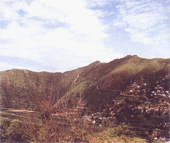|
West Bengal stretches
from the Himalayan to the Bay of Bengal. Before the partition
of the sub continent, the province of Bengal includes what is
now Bengla Desh. Early mention of Bengal can be traced in the
Mhabharata and in Ptolemy's geography.
From the end of the 19th
century onwards Bengal was one of the most prosperous
territories of the British Empire. Temples were built, the
Begali lanuage was enriched by poets and writers such as
Bankim Chandera Chaterjee and Robindernath Tagore.
The Attempted partition of
Bengal in 1904 by Lord Curzon in to a Hindu west and a Muslim
east, and the removal of the capital to New Delhi inflamed
nationalist feelings.
West Bengal with its many spots
of scenic and historical splendor, lush green forests, snow
clad mountains beautiful beaches and Calcutta, the
fascinating, effervescent and bewildering metropolis of India
can be attractive tourist destination.
General Information
|
Population
|
80,
221, 171
|
|
Area
|
88,752
Sq. Km
|
|
Capital
|
Calcutta
|
|
Languages
Spoken
|
Bengali
|
|
District
|
18
|
|
People
Per Sq. km
|
904
|
|
Literacy
|
69.22%
|
|
Best
Season
|
October
to March
|
Fairs and Festivals
Gangasagar Mela (District
South 24 Parganas)
The
largest fair of the State, Gangasagar Mela is a three-day
event held in mid-January, on the occasion of Makar Sankranti,
at Sagar Dwip. Lakhs of pilgrims come for a holy dip at the
confluence of the Ganga and the Bay of Bengal.
Kenduli Mela (District
Birbhum)
On this occasion of
Makar Sankranti (mid-January) another fair is held at Kenduli
in the district of Birbhum. The Mela draws the largest number
of Bauls, the wandering minstrels of Bengal.
Jalpesh Mela (District
Jalpaiguri)
On
the occasion of Sivaratri (February Ė March), a month-long
fair is held at Jalpesh near Mainaguri in the district of
Jalpaiguri. The fair centers round the age-old Siva temple
dedicated to Lord Jalpeswara.
Naba Barsho (Throughout West
Bengal)
The Bengali year starts
from the first Baisakh (mid-April). It is an occasion for
celebration to the Bengalees in general and tradesmen in
particular. New clothes, fresh flowers, offerings at temples,
people visiting decorated shops mark the day.
Rathayatra
(District Hooghly)
Rathayatra (June-July) at Mahesh near Serampore is a
weeklong festival. People throng to have a share in pulling
the long ropes attached to the chariots of Lord Jagannath,
Balaram and Subhadra on the journey from the temple and back.
Jhapan (District
Bankura)
All over the Western part of the state, a festival is held
in the honor of the serpent-deity Manasa on the last day of
the Bengali month Sravana (mid-August). But the most
spectacular is the one held at Vishnupur in the district of
Bankura, with its shows of live snakes on open platforms.
Durga
Puja (Throughout West Bengal)
This is the largest Bengali festival, held in the Bengali
month of Aswin (October). Images of the ten-armed goddess are
worshipped in ancient houses and at pandals, erected specially
for the Puja. After the four-day ceremony, the images are
immersed in the river. Durgapuja is the most important
festival in the city of Calcutta.
Rash Mela (District
Cooch Behar)
On the occasion of Rash Yatra (November), a fair is held
at Cooch Behar in North Bengal. The month-long fair is one of
the most important fairs in the area.
Jagaddhatri
Puja (District Hooghly)
Goddess Jagaddhatri is worshipped in the Bengali month of
Kartick (November). At Chandannagar near Calcutta images of
the goddess are tall, pandals spectacular and the illumination
unique. In fact, the illumination part is the most attractive
feature here.
Art
and Handicraft
Leather
Craft
A fine example of contemporary art and craft, the
Bengal leather crafts owe their widespread popularity and
development due to some innovative work done by gifted artists
at Santiniketan.
Brass
& Bell Metal
Copper, one
of the earliest known metals was transformed into alloys like
bronze, brass and bell metal by Indian metallurgists of
Harappan times. Archaeological evidence indicates that
Bengalís metallurgists too were practicing the art and
science of metalworkings as early as 2nd millennium
B.C.
Cane
& Bamboo
From the
depths of time and the earliest chapters of civilization,
comes a craft that endures. Bengalís very own tradition in
creating everyday and fancy articles from bamboo and cane, is
rich and varied.
Clay
Dolls
Clay
fantasies of real-life stylized, sometimes even graphic in
their representations, mark traditional Indian clay dolls and
toys. But the dolls and figurines of Krishnanagar in Bengal,
are unique in their realism and the quality of their finish.
Patronized by Maharaja Krishnachandra himself in the late 18th
century, they truly represent a breakaway from the traditional
form
|

